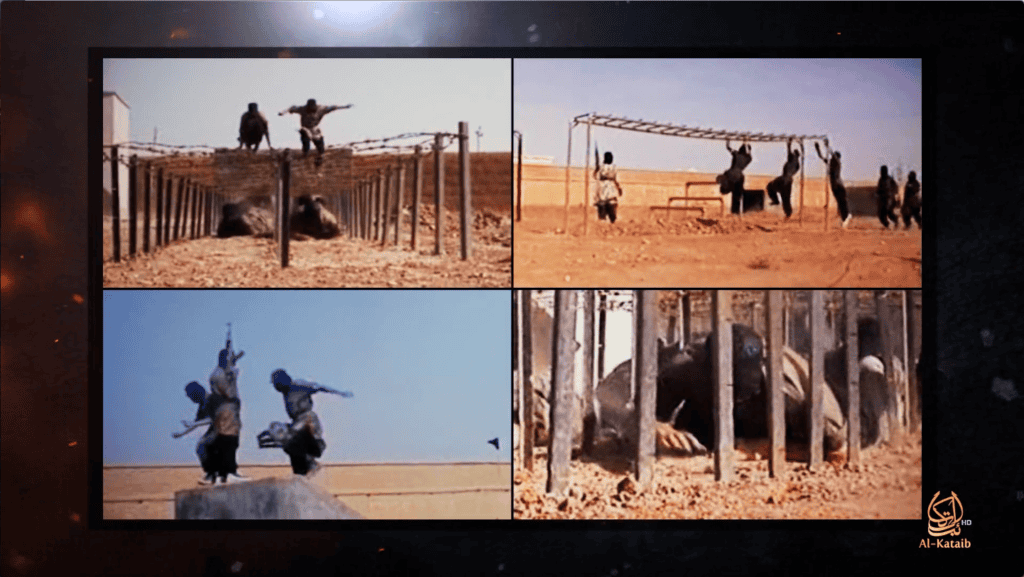BY THOMAS JOSCELYN
 Al Qaeda’s training camps in pre-9/11 Afghanistan. The group was never uprooted from the country and remains closely allied with the Taliban to this day.
Al Qaeda’s training camps in pre-9/11 Afghanistan. The group was never uprooted from the country and remains closely allied with the Taliban to this day.Since July 2018, the UN Security Council has published at least four reports highlighting the ongoing and close relationship between the Taliban and al Qaeda.
The Trump administration is currently seeking an accord with the Taliban, under which the US will set a withdrawal schedule in exchange for unspecified “counterterrorism assurances.” But the UN’s reports illustrate why the Taliban is not a credible counterterrorism partner.
The latest report was submitted in mid-July by the monitoring team responsible for tracking al Qaeda and the Islamic State.
Al Qaeda “considers Afghanistan a continuing safe haven for its leadership, relying on its long-standing and strong relationship with the Taliban leadership,” the monitoring group’s analysts reported. Al Qaeda “members continue to function routinely as military and religious instructors for the Taliban.”
As FDD’s Long War Journal has assessed for years, al Qaeda has been able to regenerate its capabilities and extend its influence by partnering with other jihadist groups rooted in the region. To give just one example, chosen from many, we assessed in 2009 that al Qaeda’s influential allies included Lashkar-e-Taiba (LeT) and the Haqqani Network. The latter is a powerful subgroup within the Taliban. Siraj Haqqani is both the leader of the Haqqani Network and the Taliban’s deputy emir, a position that gives him broad power across the insurgency in Afghanistan.
Ten years later, the UN Security Council’s monitoring team reports that al Qaeda “continues to cooperate closely with” both LeT and the Haqqani Network.
“Under Taliban patronage,” the report reads, al Qaeda “is keen to strengthen its presence in Badakhshan Province, in particular in the Shighnan area bordering Tajikistan, as well as in Barmal in Paktika Province.”
Another way in which al Qaeda has entrenched itself in Afghanistan is by working with, and through, Central Asian jihadist groups.
“In the north of Afghanistan, in Badakhshan Province, a number of Central Asian groups affiliated with al Qaeda are operating,” the UN monitoring team notes. These Central Asian organizations include: the predominately Uzbek group, Khatiba Imam Al-Bukhari (KIB), which has “approximately 50 fighters” in Afghanistan and also fights in Syria; the Islamic Movement of Uzbekistan (IMU), which splintered as a result of the Islamic State’s rise, but still has “up to 100” fighters waging jihad under the Taliban’s banner; the Eastern Turkistan Islamic Movement, also known as the Turkistan Islamic Party (TIP), which “has an estimated 350 fighters” in northern Afghanistan; and Jamaat Ansarullah, a small Tajik group headed by a jihadist known as Asliddin Davlatov.
As a result, “Central Asian countries remain concerned about the terrorist threat emanating from Afghanistan.”
The UN Security Council’s report makes it clear that all of these al Qaeda-linked Central Asian groups “operate under the auspices of the Taliban, mainly as instructors and explosives experts.” These same outfits “cooperate with organized criminal networks engaged in drug trafficking across the border between Afghanistan and Tajikistan, also using those routes to infiltrate fighters into Central Asia.”
Overall, al Qaeda “remains resilient” around the globe and is actually “stronger than” the Islamic State in several geographic regions.
The UN’s monitoring team says that Ayman al-Zawahiri’s “health and longevity,” as well as the group’s “succession” in the case of his demise, “are in doubt.”
It isn’t clear what intelligence the UN’s monitoring team relied upon regarding Zawahiri’s health. He is elderly and it is certainly possible that he suffers from ill-health. But FDD’s Long War Journal notes that Zawahiri regularly produces video and audio messages, far more frequently than his rival Abu Bakr al-Baghdadi. This is an indication that Zawahiri is still quite active. And other reports concerning the poor health of jihadist leaders, including Osama bin Laden, have proven to be false.
Earlier this year, a jihadist in Syria posted letters detailing al Qaeda’s succession plan as it stood several years ago. Two of the four men have since been killed in U.S. drone strikes, but the other two, who are reportedly operating inside Iran, are still alive. It is likely that al Qaeda has a similar succession plan in place today.
The UN Security Council’s latest report is broadly consistent with the three previous reports filed on the same issues. For more on those analyses, see FDD’s Long War Journal reports:
Al Qaeda’s alliance with the Taliban ‘remains firm,’ UN Says (based on a July 2018 UN Security Council report)
UN: Al Qaeda continues to view Afghanistan as a ‘safe haven’ (based on a Jan. 2019 UN Security Council report)
Al Qaeda is growing stronger under Taliban’s umbrella, UN finds (based on a June 2019 UN Security Council report)
Thomas Joscelyn is a Senior Fellow at the Foundation for Defense of Democracies and the Senior Editor for FDD's Long War Journal.
